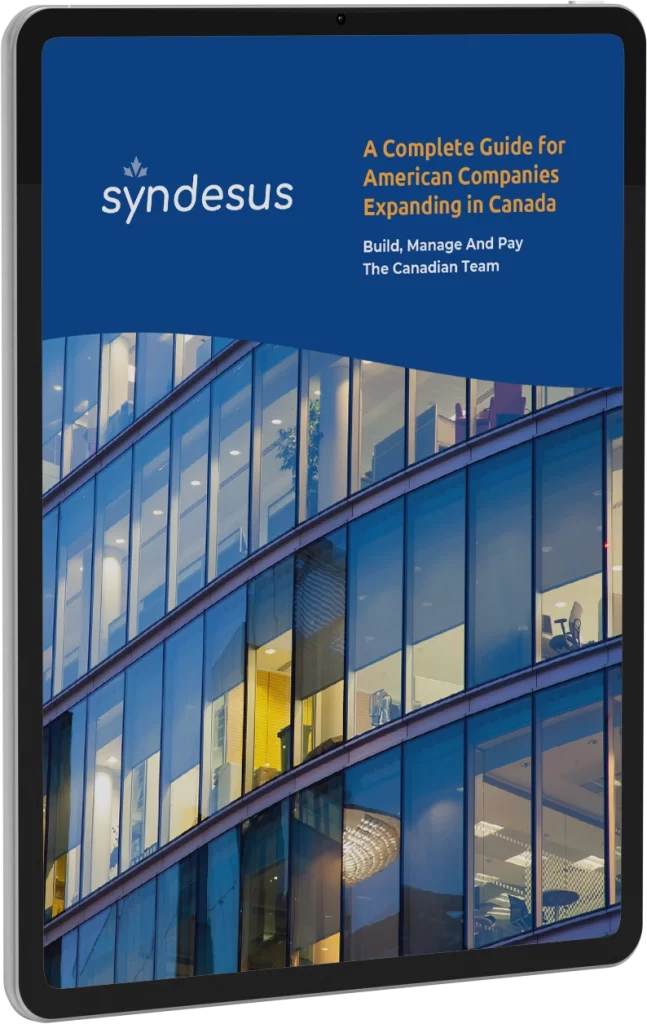The 27-year-old trade deal, the North American Free Trade Agreement (NAFTA), has a new name — it is now called the Canada-United States-Mexico Agreement (CUSMA). The name might be new, but it continues to nurture important trade relationships among Mexico, Canada, and the US.
The North American free-trade framework had largely eliminated tariffs on trade between the three North American countries.
But a lot has changed since NAFTA came into effect in 1994, and CUSMA manages to modernize rules and regulations that deal with new technology, like the internet, intellectual property, and investment, to name a few.
The primary purpose of CUSMA is to easily allow goods and services to move across North American borders. This includes simplifying the movement of workers from the US to Canada.
Overall, NAFTA and CUSMA are far more alike than they are different. You can read more about their differences in a recent article I wrote, but some highlights include:
- CUSMA requires 75% of a vehicle’s parts to be made in one of the three countries to benefit from tariff-free importing between the three countries.
- The agreement also provides $600 million to address environmental problems and opens up the Canadian market to US dairy, poultry, and eggs.
- CUSMA extends the terms of copyright to 70 years beyond the life of the author (up from 50 years).
- CUSMA expands on labor commitments by requiring more protections for workers and blocking imported goods that were made with forced labor. The deal also sets up mechanisms to ensure that these rules are enforced.
The primary purpose of CUSMA is to easily allow goods and services to move across North American borders. This includes simplifying the movement of workers from the US to Canada.
Here is everything you need to know about how to use CUSMA for cross-border migration and employment.
CUSMA makes it easy for Americans to work in Canada
For cooperation between Canada, Mexico, and the US to grow, workers must have access to each other’s country to sell, provide goods or services, or trade and invest.
Citizens of the US or Mexico can enter Canada temporarily for work that involves investment or the trade of goods or services.
CUSMA offers a pathway to Canada for Americans interested in a temporary move across the border.
There are four types of workers who are included under the CUSMA:
- Business visitors who are working in several industries, including research, design, and manufacturing, are allowed to carry out their activities without the need for a work permit.
- Professionals who enter Canada to work as salaried employees of a Canadian business, or as contract workers for an American or Mexican company that has an agreement with a Canadian business. These professionals are not subject to the Labour Market Impact Assessment (LMIA) process, which tests the local labor market before granting work authorization, but they do need a work permit.
- Intra-company transferees who are employed by an American or Mexican company and are being transferred to the Canadian enterprise, branch, or affiliate in an executive role or to provide specialized knowledge. Like the previous category, these intra-company transferees are also exempt from the LMIA process but they do need a work permit.
- Traders and investors who either facilitate substantial trade between the US and Canada or Mexico and Canada or have a substantial amount of capital invested in Canada. Traders and investors are also not subject to the LMIA process but they do need a work permit.
Business visitors are exempt from getting a work permit to work in Canada, but professionals, intra-company transferees, and traders and investors must obtain work permits through a special application process. Fortunately, workers in all categories are exempt from needing an LMIA, which eases the entry process.
CUSMA offers a pathway to Canada for Americans interested in a temporary move across the border. But if you’re looking to gain permanent residence in Canada, consider two other major routes to Canada for American workers: Express Entry and PNP programs.
Express Entry and PNP programs offer pathways to permanent residence in Canada
Express Entry is the fastest and most popular path into Canada. It’s an application management system used by Immigration, Refugees, and Citizenship Canada (IRCC) to process visa applications from skilled workers.
To qualify for Express Entry you will need a satisfactory score within the Comprehensive Ranking System (CRS).
There are a total of 1,200 points available within the CRS. Express Entry ranks candidates based on their age, education, language proficiency, work experience, and other factors. If you are highly ranked, you can be invited to apply for permanent residence. The process is competitive, but applications are usually processed within six months or less.
Additional pathways that are connected to Express Entry are Provincial Nominee Programs (PNPs).
Since being introduced in the 1990s, PNPs have become an incredibly popular pathway to obtain permanent residence for skilled foreign workers. Most of Canada’s provinces and territories have developed their immigration programs as a way to attract workers with specific skills.
The PNP gives eleven Canadian provinces and territories the ability to customize and accelerate their immigration processing to fill gaps in the labor market. For example, some smaller provinces seek more doctors because they have too few, or agriculture-focused provinces prioritize welcoming farmers to keep their local economies going.
There are two main types of PNP streams: skilled worker and business immigration. The skilled worker PNP requires that you have a job offer or a current position with a provincial employer in an industry that meets local needs. The business immigration PNP enables you to start, invest in, or buy a business in the province.
A nomination from a province via a PNP is the single most valuable factor within Express Entry’s Comprehensive Ranking System.
PNP applications are first approved in a process that takes two weeks to nine months, depending on the province. This approval is commonly called being “nominated” by the province. Once you’ve been nominated, your application needs federal approval which usually includes medical and security checks that can take up to six months to complete.
The power to select immigrants is shared between Canada’s federal government and provincial/territorial governments, and the Express Entry system manages economic immigration for both levels of government.
A nomination from a province via a PNP is the single most valuable factor within Express Entry’s Comprehensive Ranking System. PNP nominees get an additional 600 points towards their overall scores, which all but guarantees eventual permanent residence in Canada if the candidate applies.
Syndesus can help you navigate the various pathways to Canada while keeping your US job
Canada boasts more than 100 different immigration pathways! So, if you’re living in the US and are considering Canada for a temporary or permanent move, your immigration options can be overwhelming.
As an Employer of Record (EOR), Syndesus can legally hire you on behalf of your US employer.
CUSMA eases the immigration process for Americans interested in moving to Canada, but the reality is that many Americans don’t understand their options or don’t have a company that’s able to sponsor them.
That’s where Syndesus comes in.
Syndesus can help you relocate to Canada and continue to work for your American employer. And if your US employer doesn’t have a Canadian office, no problem.
As a employer of record (EOR), Syndesus can legally hire you on behalf of your US employer. We take care of the billing, HR, legal and other paperwork, and you come to work, in Canada, just the same!
And if you’re looking for a new tech job in Canada, Path to Canada, a service provided by Syndesus, can match you with Canadian tech jobs that are open to sponsoring and hiring non-Canadians.
Reach out to us to learn more about how we can help you work remotely for a US tech company from Canada, or join our Path to Canada database of qualified candidates seeking to move to Canada and get matched with a Canadian tech employer.

